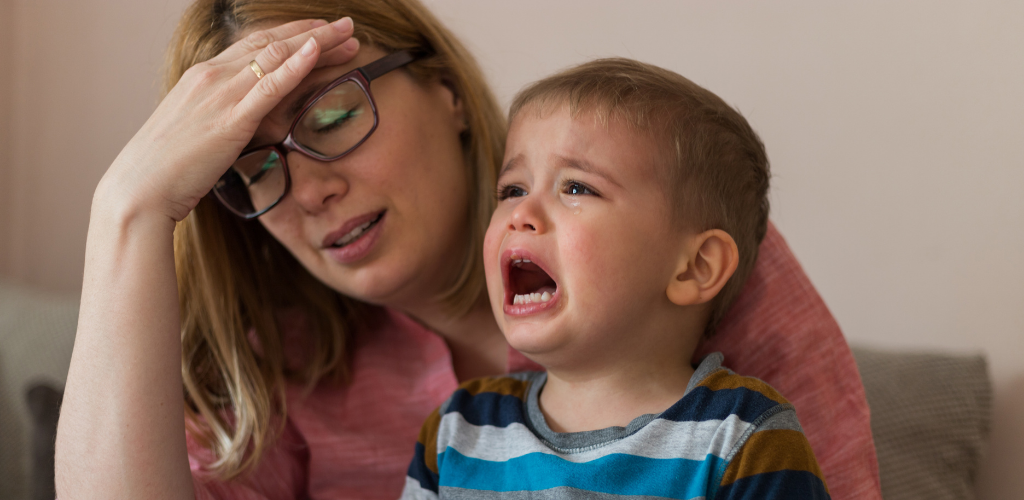Childhood Fears: Should I Be Concerned?
As an adult, do you ever recall feeling and being scared of certain things when you were younger but that fear just disappears as you enter adulthood? This is called ‘childhood fears’. Childhood fears are part and parcel of growing up and apparently, can be categorized according to the different age groups of children. Typical childhood fears include monsters, the dark, and being alone. Separation anxiety which we have discussed quite thoroughly in a separate article are also considered one of the fears which most of us experience during our earliest years. Let’s look at how childhood fears manifest in different ways during different stages of childhood:
- Infant Years
For most of us, this is when the fear of separation develops. Babies often get scared and anxious when their parents leave them to other caregivers such as teachers and nannies. This is why they start to cry as soon as you drop them off at the daycare centre. This is normal as babies have the perception that if the main caregiver, which is their parents are not there, their needs will not be met.
- Toddler Years
As a child grows older and starts to understand their surroundings a little bit more, they start to develop fears which are more related to their environment. This is when you’ll notice how your child feels the need to have you nearby when they use the bathroom or when they are in a separate room. They also start feeling anxious about the things that they are not familiar with such as food that they have never eaten before, as well as the dark.
- Preschool and Older
Some fears which are developed during toddler years may stick around as a child enters preschool. However, as they begin to make sense of their world, socialize and build relationships with other children, children of preschool age will develop fears which are more personal and related to their socio-emotional well being such as lack of confidence, losing friends, being disliked by others, being ashamed and embarrassed.

Whatever age your child is in at the current moment, it is important to remember that as a parent, childhood fears are totally normal and manageable. It is also crucial for parents to be more aware whether the fears which are exhibited by their children are normal or part of a more serious developmental issue. Before making assumptions of the latter, let’s learn how to properly address and manage childhood fears to make sure your children grow in the best state of mind as they possibly could. Here’s 6 ways to help your child with childhood fears:
1. Never disregard or undermine

Parents are responsible for being informed and aware of whatever issues their children are facing. Therefore, it is helpful if an open communication is maintained between you and your child. When your child is telling you that they are scared of the thunder, never laugh it off and make it seem as if it is downright ridiculous. Instead, as parents, you should acknowledge these fears and communicate to your children that you are there to help them get rid of these fears.
2. Listen and ask questions

It is of great help if you ask relevant questions that would inform your children’s fears. So, let’s say your child comes running into your bedroom at night because of a nightmare, allow them to explain the details of the nightmare. From there, you will be able to break down the cause and effect of such fears and address them in the right manner.
3. Explain in detail why such things are not scary or doesn’t exists

For example, if a child is scared of thunder, you can sit down with them and casually explain why thunder occurs when it’s raining. Most children fear the unknown so educating them about why they shouldn’t fear something will greatly help. Keeping your children informed, educated, and aware will minimize and limit these fears from developing even further.
4. Use methods to calm down and get rid of anxiety

When a child feels scared, most of the time, they will start to have outbursts of tears because they are unable to manage the emotions that they are feeling at the moment. Treat their fears the same way you, as an adult, treat stressful situations. Adults, for example, would probably go to the gym or watch a movie to de-stress. Children can be calmed through a variety of ways and activities such as music, taking a bath, playtime, and even, reading them a book would calm those nerves.
5. Limit exposure to anything that might worsen fear

It’s best if you could limit what might worsen and aggravate your child’s fears such as scary movies.
6. Identifying the differences between what’s normal and what’s not

Knowing all of this, as parents, you must also be informed of what is considered typical childhood fears and what is not such as trauma and phobias. But the best way to find out is to use your common sense and intuition by observing other children’s behaviours. Communicate and exchange opinions with other parents. If you feel concerned about your child’s fears, consulting a pediatrician will offer you the best advice and help.









